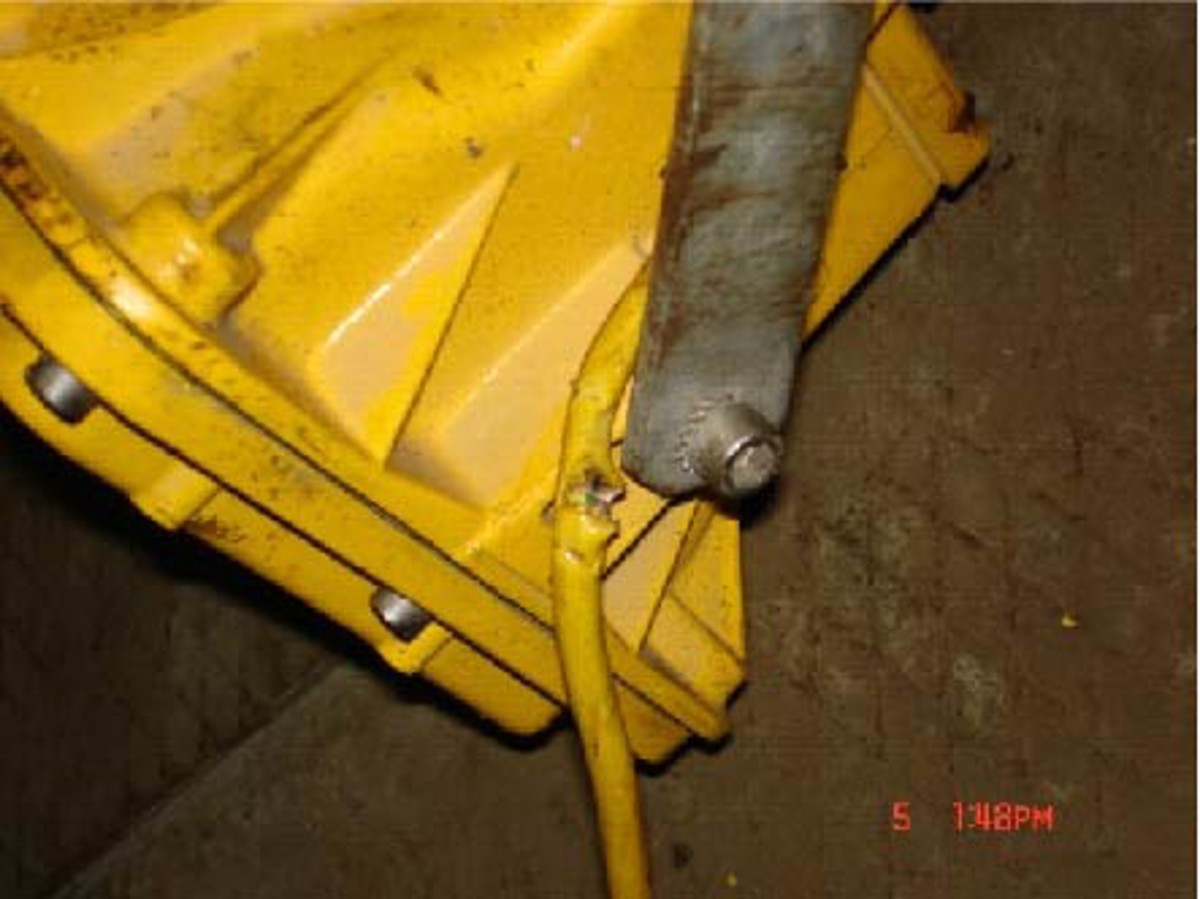Fatal electrocution
- Safety Flash
- Published on 2 June 2009
- Generated on 23 December 2025
- IMCA SF 07/09
- 3 minute read
Jump to:
IMCA has learnt of a fatal incident in which a person was electrocuted.
What happened?
A rig sub-contractor suffered fatal injuries from electrical shock whilst performing a welding operation. A lamp used to illuminate the worksite was found to be a potential source of electrical shock as the lamp’s electrical cord was found to have been damaged.
The damage may have been caused by a pinching action of the cord between the loose mounting bracket of the light and the light housing which was observed to be in contact with the victim’s body.

damaged electrical cord
What were the causes?
Further investigation revealed the following:
- A ground fault circuit interrupter (GFCI) was not utilised and the circuit breaker did not trip when the incident occurred.
- The lamp used was designed for permanent exterior mounting and had been modified for use as an interior portable illumination source.
- Sub-contractor personnel had not been effectively supervised.
- An effective pre-job (pre-start) safety discussion had not taken place.
- The approved job safety analysis (JSA) overlooked the potential for electric shock hazards and for cord damage and did not address the actual work that was performed.
- Confined space entry was not considered or included in permits.
- The hot work permit review process was not effective.
Lessons learnt
The following lessons were learnt:
- When using portable electric tools in potentially damp areas, a GFCI (fixed or portable) should be utilised to protect personnel from potential electrical shock.
- All tools and equipment should only be used for their intended and manufacturer’s recommended purpose; any change to a tool or equipment’s intended purpose should be thoroughly reviewed and approved through an effective management of change (MoC) process.
- An effective pre-start meeting should be held with the personnel performing the work to ensure that all hazards have been identified, proper tools are being utilised and the job scope is well defined and understood. The supervisor in charge of the worksite should be responsible for having this meeting. A field review of the work site should be part of this meeting.
- JSAs should be specific to the job being performed. JSAs should focus on the steps taken to accomplish the task rather than generalised statements that cover a wide range of activities. JSAs should focus on hazard identification and mitigations for each hazard.
- Established procedures for issuing and approving general work permits, hot work permits, and confined space entry permits should be rigorously followed to ensure necessary steps have been taken to minimise risk of injury, including a survey of the work site by the person in charge.
IMCA Safety Flashes summarise key safety matters and incidents, allowing lessons to be more easily learnt for the benefit of the entire offshore industry.
The effectiveness of the IMCA Safety Flash system depends on the industry sharing information and so avoiding repeat incidents. Incidents are classified according to IOGP's Life Saving Rules.
All information is anonymised or sanitised, as appropriate, and warnings for graphic content included where possible.
IMCA makes every effort to ensure both the accuracy and reliability of the information shared, but is not be liable for any guidance and/or recommendation and/or statement herein contained.
The information contained in this document does not fulfil or replace any individual's or Member's legal, regulatory or other duties or obligations in respect of their operations. Individuals and Members remain solely responsible for the safe, lawful and proper conduct of their operations.
Share your safety incidents with IMCA online. Sign-up to receive Safety Flashes straight to your email.